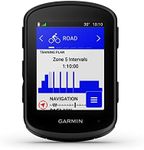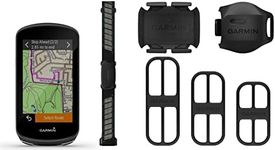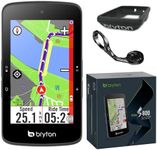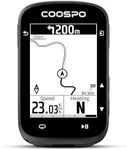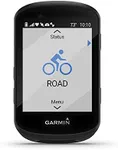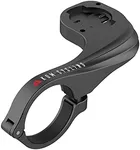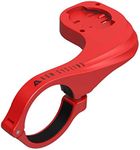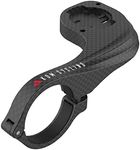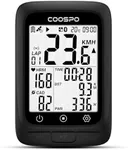Buying Guide for the Best Bike Computers
Choosing the right bike computer can significantly enhance your cycling experience by providing valuable data and insights. A bike computer can help you track your performance, navigate routes, and stay connected. To find the best fit for you, consider the key specifications and how they align with your cycling needs and goals.GPS AccuracyGPS accuracy determines how precisely the bike computer can track your location and route. This is important for navigation and for analyzing your ride data. High accuracy is crucial for serious cyclists who need precise data for training and competition. For casual riders, moderate accuracy may suffice. Look for devices with multi-satellite support (like GPS, GLONASS, Galileo) for better accuracy.
Display Size and TypeThe display size and type affect how easily you can read the information on your bike computer. Larger displays are easier to read, especially while riding, but they can be bulkier. Smaller displays are more compact but may be harder to read. Consider your eyesight and how much data you want to see at a glance. Touchscreen displays offer ease of use, while button-operated ones can be more reliable in wet conditions.
Battery LifeBattery life is crucial, especially for long rides or multi-day trips. A longer battery life means you can ride longer without worrying about recharging. If you often go on long rides, look for a bike computer with a battery life of at least 15-20 hours. For shorter rides, a battery life of 10-15 hours may be sufficient. Some models offer battery-saving modes to extend usage.
ConnectivityConnectivity options like Bluetooth, ANT+, and Wi-Fi allow your bike computer to pair with other devices and sensors, such as heart rate monitors, power meters, and smartphones. This is important for tracking additional data and for syncing your ride data with apps. If you use multiple sensors or like to upload your rides to apps like Strava, ensure the bike computer supports these connections.
Mapping and NavigationMapping and navigation features help you find your way and explore new routes. Basic models may only offer breadcrumb trails, while advanced models provide detailed maps and turn-by-turn directions. If you often ride in unfamiliar areas or enjoy exploring, look for a bike computer with robust navigation features. For regular routes, basic navigation may be sufficient.
Data Tracking and AnalysisData tracking and analysis capabilities allow you to monitor your performance and progress. This includes metrics like speed, distance, elevation, and cadence. Advanced models offer more detailed analysis and can track additional metrics like power output. If you're training for an event or looking to improve your performance, choose a bike computer with comprehensive data tracking. Casual riders may only need basic metrics.
Durability and Weather ResistanceDurability and weather resistance ensure that your bike computer can withstand the elements and rough conditions. Look for models with a high IP rating (e.g., IP67 or IP68) for water and dust resistance. This is especially important if you ride in varying weather conditions or on rough terrain. For fair-weather riders, moderate durability may be sufficient.
Ease of UseEase of use refers to how user-friendly the bike computer is, including setup, interface, and operation. A simple, intuitive interface can make a big difference, especially if you're not tech-savvy. Consider how easy it is to navigate menus, start/stop rides, and access data. If you prefer a straightforward experience, look for models known for their simplicity and ease of use.


